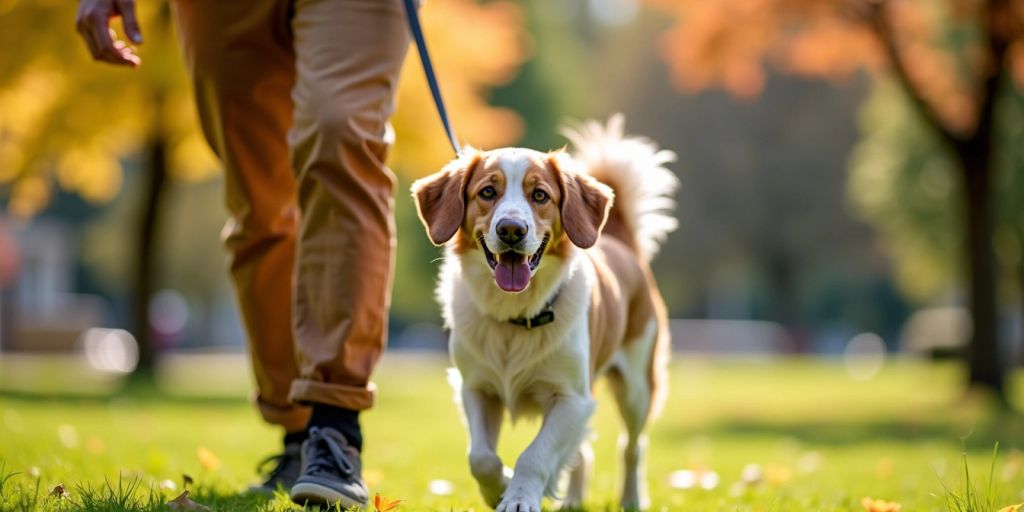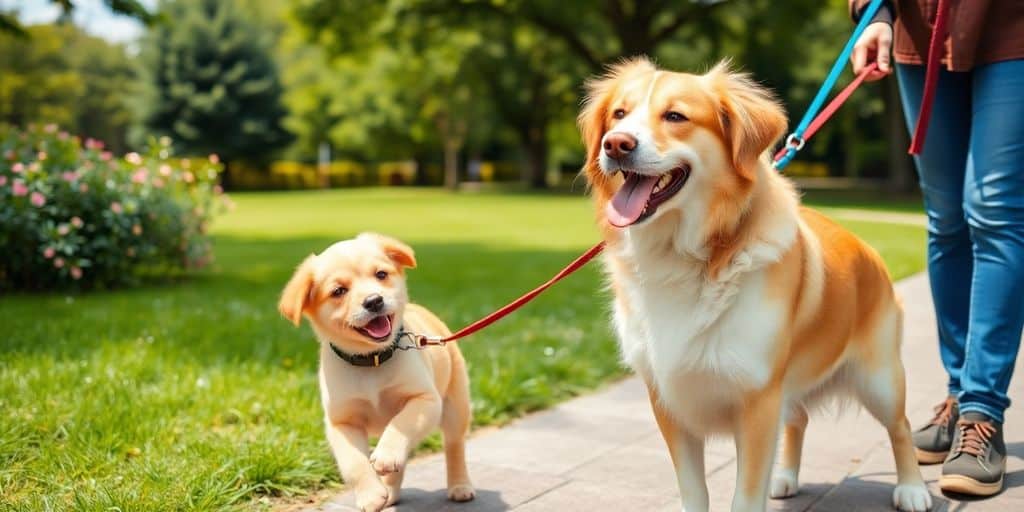Is Your Pup Ready? Decoding the Ideal Dog Leash Training Age
Bringing a puppy into your life is a joyous occasion, filled with cuddles, playful nips, and the promise of a lifelong bond. As your little furball grows, training becomes crucial, and leash training is often one of the first milestones. But when is the right time to start? Jump the gun, and you risk overwhelming your pup; wait too long, and bad habits might take root. This comprehensive guide will walk you through the ideal dog leash training timeline, ensuring a positive and effective experience for both you and your canine companion.
Understanding the Critical Socialization Period: Why Early Training Matters?
The socialization period, typically between 3 to 16 weeks of age, is a crucial window in a puppy's development. During this time, puppies are highly receptive to new experiences, people, and environments. Early socialization helps them develop into well-adjusted, confident adults. Leash training, when introduced appropriately during this period, can be a valuable part of their socialization journey. It exposes them to the world outside their immediate surroundings, helping them learn to navigate different sights, sounds, and smells while feeling secure with you by their side.
Puppy Development Milestones: How Physical and Mental Growth Influence Leash Training
A puppy's readiness for leash training isn't just about age; it's also about their physical and mental development. Puppies need to have sufficient coordination and attention span to learn basic commands and walk comfortably on a leash. Before 8 weeks, puppies are still heavily reliant on their mothers and littermates. Between 8 and 12 weeks, they begin to develop more independence and curiosity, making it a good time to introduce the very basics of leash training.
Signs Your Puppy Is Ready for Leash Training: Temperament, Attention Span, and Confidence
Before you clip on that leash, assess your puppy's readiness. Look for these signs:
- Temperament: Is your puppy generally curious and playful, or fearful and withdrawn? A confident, curious puppy will likely be more receptive to leash training.
- Attention Span: Can your puppy focus on you for short periods, even with distractions? Start with short sessions and gradually increase the duration as their attention span grows.
- Confidence: Is your puppy comfortable exploring new environments and objects? If they are easily spooked, focus on building their confidence before introducing the leash.
The Ideal Dog Leash Training Timeline: A Week-by-Week Guide from 8 Weeks Onward
Here’s a possible schedule:
- 8-10 Weeks: Introduction to the Collar/Harness. Start by letting your puppy wear a lightweight collar or harness for very short periods (a few minutes), gradually increasing the time. Make it a positive experience by associating it with treats and playtime.
- 10-12 Weeks: Introducing the Leash. Clip the leash onto the collar/harness and let your puppy drag it around inside for a few minutes. Supervise them closely to prevent them from getting tangled.
- 12-16 Weeks: Short, Supervised Walks. Begin with short, 5-10 minute walks in a quiet, familiar area. Focus on rewarding your puppy for walking nicely next to you.
- 16+ Weeks: Longer Walks and New Environments. Gradually increase the length and difficulty of your walks. Introduce new environments and distractions slowly, always rewarding good behavior.
Read our article Heel vs. Loose Leash: The Ultimate Dog Walking Showdown for more tips!
Essential Leash Training Equipment: Choosing the Right Leash, Collar/Harness, and Treats
Having the right equipment can make a big difference in your leash training success. Consider these:
- Leash: A lightweight, 4-6 foot training leash is ideal for puppies. Avoid retractable leashes at this stage, as they can encourage pulling.
- Collar/Harness: Choose a comfortable, well-fitting collar or harness. Harnesses are often preferred for puppies, as they distribute pressure more evenly and reduce the risk of neck injury.
- Treats: High-value, small, and easily chewable treats are essential for positive reinforcement.
Step-by-Step Guide to Introducing the Leash and Collar/Harness: Making It a Positive Experience
The key to successful leash training is to make it a positive experience for your puppy.
- Start with Positive Associations: Before even putting the collar/harness on, show it to your puppy and give them a treat.
- Gradual Introduction: Put the collar/harness on for a few seconds, then take it off and give a treat. Gradually increase the time they wear it.
- Attach the Leash: Once your puppy is comfortable wearing the collar/harness, attach the leash and let them drag it around.
- Follow Them: Initially, just follow your puppy as they move around with the leash attached. This helps them get used to the feeling of the leash without any pressure.
- Introduce Gentle Guidance: Gently guide your puppy in the direction you want them to go, using treats and praise to reward them for following.
Basic Leash Manners: Teaching Loose-Leash Walking, Sit, Stay, and Recall
Leash training goes beyond simply walking on a leash. It also involves teaching basic commands that will make your walks more enjoyable and safe.
- Loose-Leash Walking: The goal is for your puppy to walk calmly by your side without pulling. Reward them for keeping the leash loose. If they start to pull, stop walking until they come back to you.
- Sit: Teach your puppy to sit on command. This is useful for controlling their impulses and keeping them safe in potentially dangerous situations.
- Stay: Teaching stay helps your puppy develop self-control and patience. Start with short stays and gradually increase the duration.
- Recall: A reliable recall is essential for off-leash safety. Practice calling your puppy back to you in a safe, enclosed area, rewarding them enthusiastically when they come.
Troubleshooting Common Leash Training Problems: Pulling, Barking, Lunging, and Fear
Leash training isn't always smooth sailing. Here are some common problems and how to address them:
- Pulling: Stop walking and wait for your puppy to stop pulling. You can also try changing direction abruptly.
- Barking: Identify the trigger for the barking and try to avoid it. If that's not possible, distract your puppy with a treat or toy.
- Lunging: Similar to barking, identify the trigger and try to avoid it. Work on desensitization and counter-conditioning techniques.
- Fear: If your puppy is fearful, take things slowly and gradually expose them to the things they fear, rewarding them for staying calm. Read our article **Separation Anxiety SOS: Stop the Destruction & Save Your Sanity** for more help overcoming your pups fears.
Positive Reinforcement Techniques: How to Use Treats, Praise, and Play to Motivate Your Pup
Positive reinforcement is the most effective way to train your puppy. Focus on rewarding good behavior and avoid punishment, which can damage your relationship and create fear. Use treats, praise, and play to motivate your puppy and make training fun.
Leash Training for Different Dog Breeds and Sizes: Adjusting Your Approach
Different breeds and sizes of dogs may require slightly different approaches to leash training. For example, some breeds are naturally more energetic and may require more exercise. Smaller breeds may be more easily intimidated by the leash and collar/harness, so it's important to introduce them gently.
Advanced Leash Training: Off-Leash Training Considerations and Safety
Once your puppy has mastered basic leash manners, you may consider off-leash training. However, this requires a solid foundation of training and a reliable recall. Start in a safe, enclosed area and gradually increase the level of distraction.
Maintaining Consistency and Patience: The Key to Long-Term Success
Consistency and patience are crucial for long-term success in leash training. Practice regularly, even after your puppy has mastered the basics. Be patient and understanding, and remember that every dog learns at their own pace. Practice with this recommended leash.
When to Seek Professional Help: Identifying When a Dog Trainer Is Needed
If you're struggling with leash training, don't hesitate to seek professional help from a certified dog trainer. A trainer can provide personalized guidance and help you address any specific challenges you're facing. Also, review Tired of Being Jumped On? A Step-by-Step Plan to Calm Your Canine's Greetings for more tips.
Impact of Leash Training on Overall Dog Well-being: Benefits for Both Dog and Owner
Leash training has numerous benefits for both dogs and owners. It provides physical exercise, mental stimulation, and opportunities for socialization. It also strengthens the bond between you and your dog, making your relationship more enjoyable and fulfilling.
What are the dangers of starting leash training too early?
Starting leash training too early can have adverse effects on a puppy's development. Puppies in their early weeks are still fragile, both physically and emotionally. Their bones and joints are still developing, and putting them on a leash for walks before they're ready can lead to injuries.
Emotionally, early leash training can overwhelm and scare a young puppy. The world is already a big and sometimes frightening place, and forcing them to navigate it on a leash before they feel secure can lead to anxiety and fear-based behaviors. This can make future training more difficult and damage the trust between you and your puppy.


